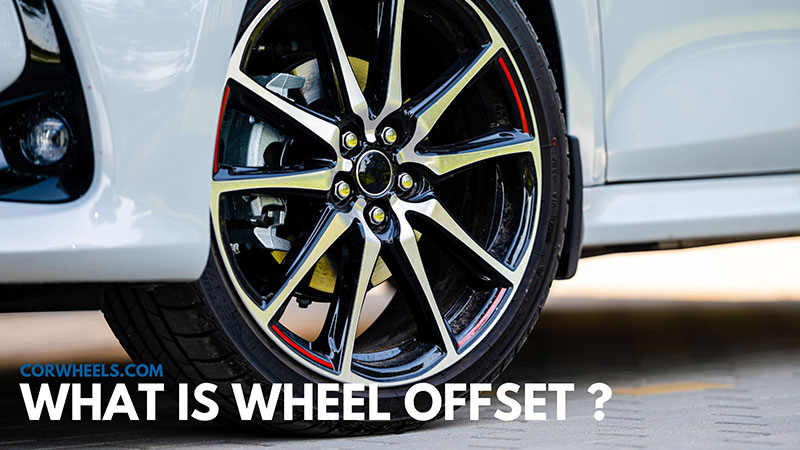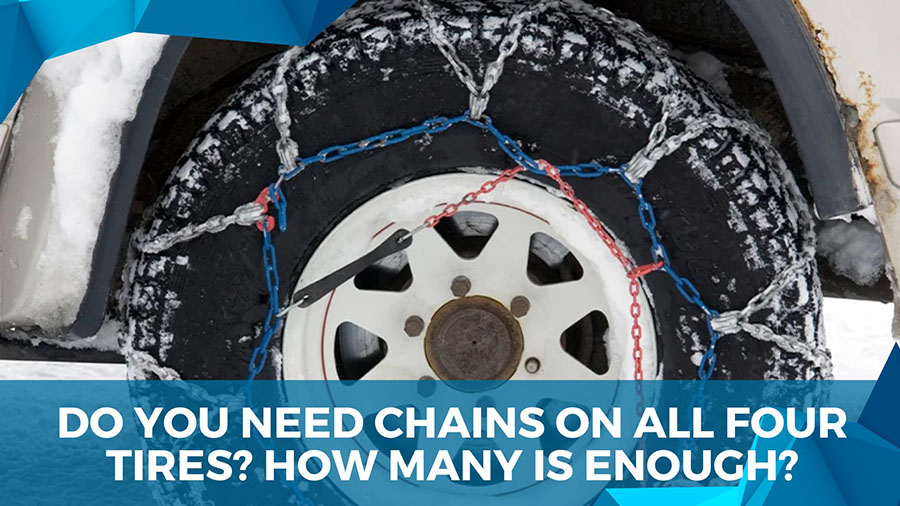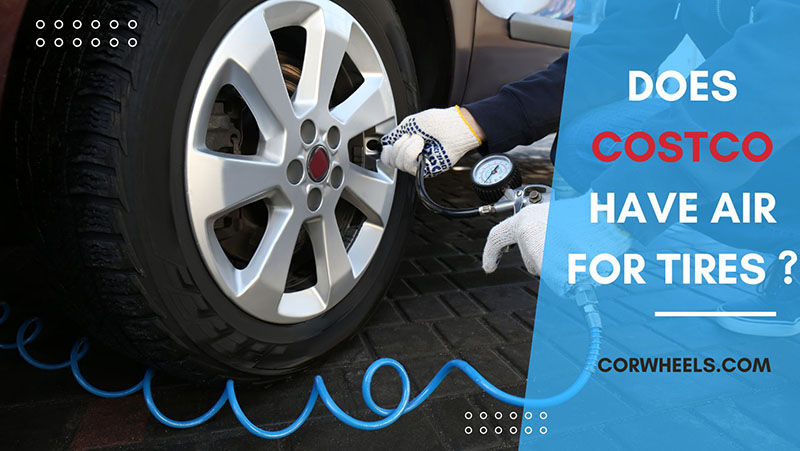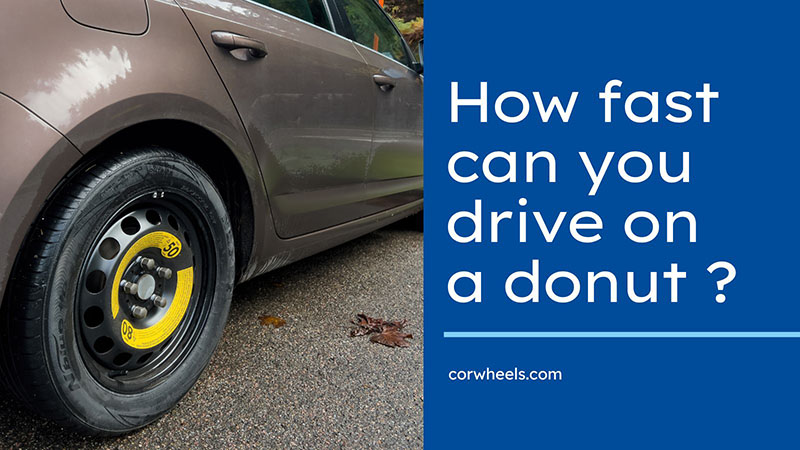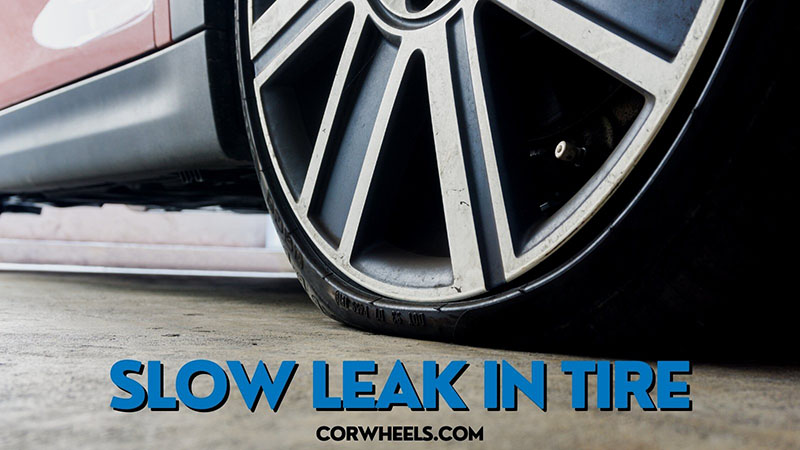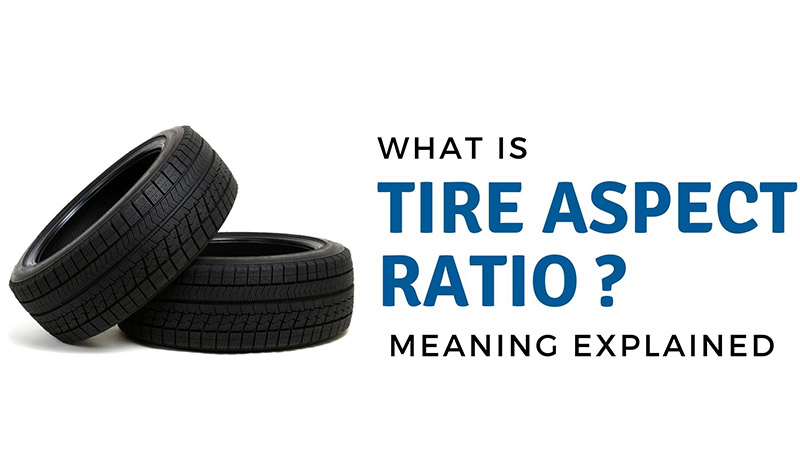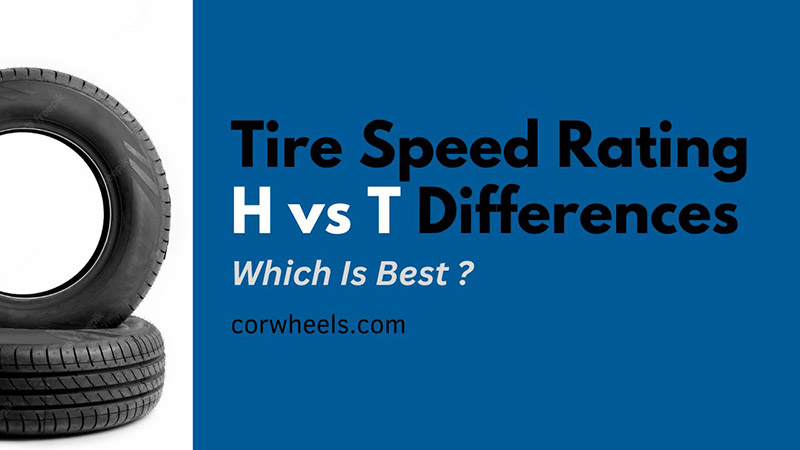Are you ready to unlock the secrets behind the perfect wheel fitment? Look no further! Whether you’re a seasoned car enthusiast or a beginner in the automotive realm, understanding truck wheel offset is crucial for achieving the ideal balance between style, performance, and functionality.
In this article:
What Is Wheel Offset?
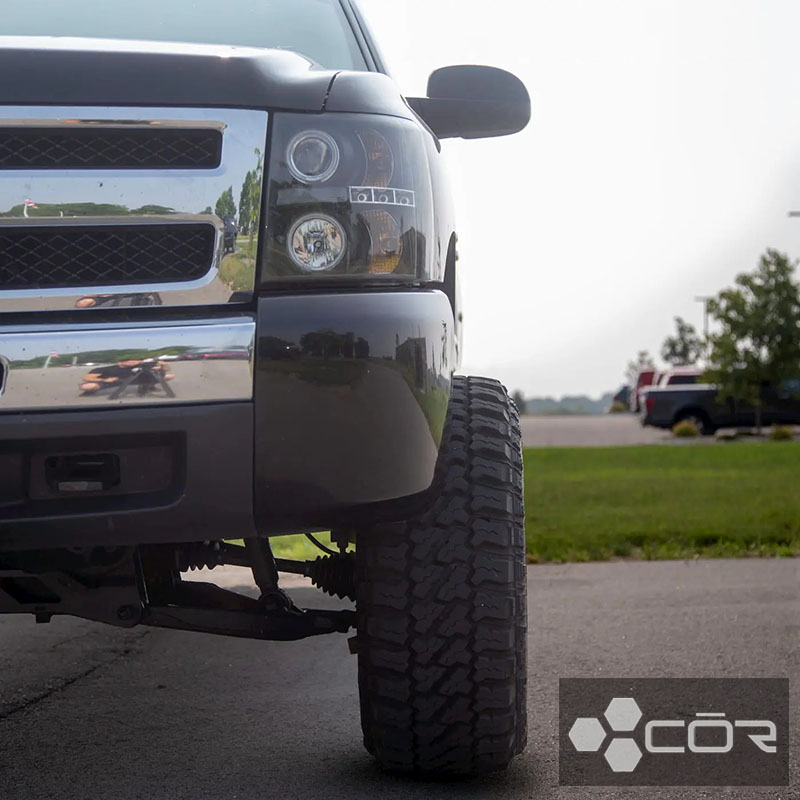
Wheel offset refers to the distance between the centerline of a wheel and the mounting surface where the wheel attaches to the vehicle’s hub. Meanwhile, backspacing equals the gap between the back lip of the wheel to the mounting surface.
The choice of wheel offset affects handling characteristics, suspension geometry, tire clearance, and the vehicle’s overall appearance.
How Does Wheel Offset Work?
A wheel with a positive offset pushes the wheel closer to the vehicle’s suspension components and provides better stability, while being negative equals better cornering as the mounting surface approaches the rear of the wheel. And zero offset means the wheels are in line with the car’s center.
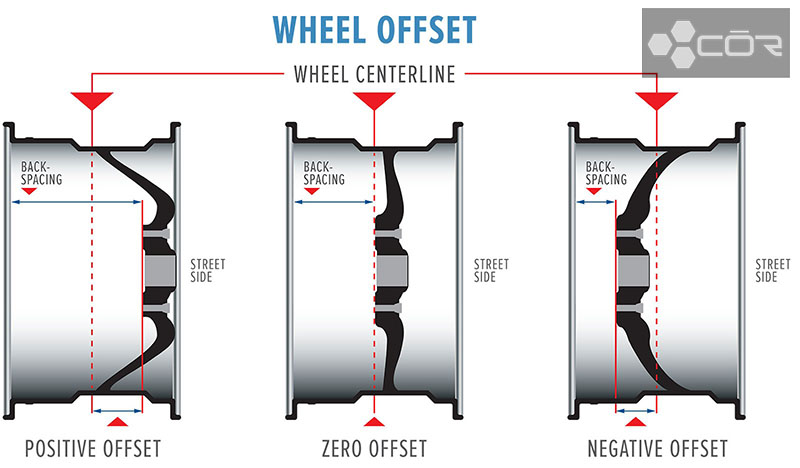
The positive offset wheels are common in front-wheel drive cars. Conversely, a negative offset moves the wheel outward, away from the suspension. This allows for a wider track and more clearance for larger tires or modified suspension setups. Negative offset is often seen in off-road vehicles or those seeking a more aggressive stance.
Types Of Offset
Positive Offset
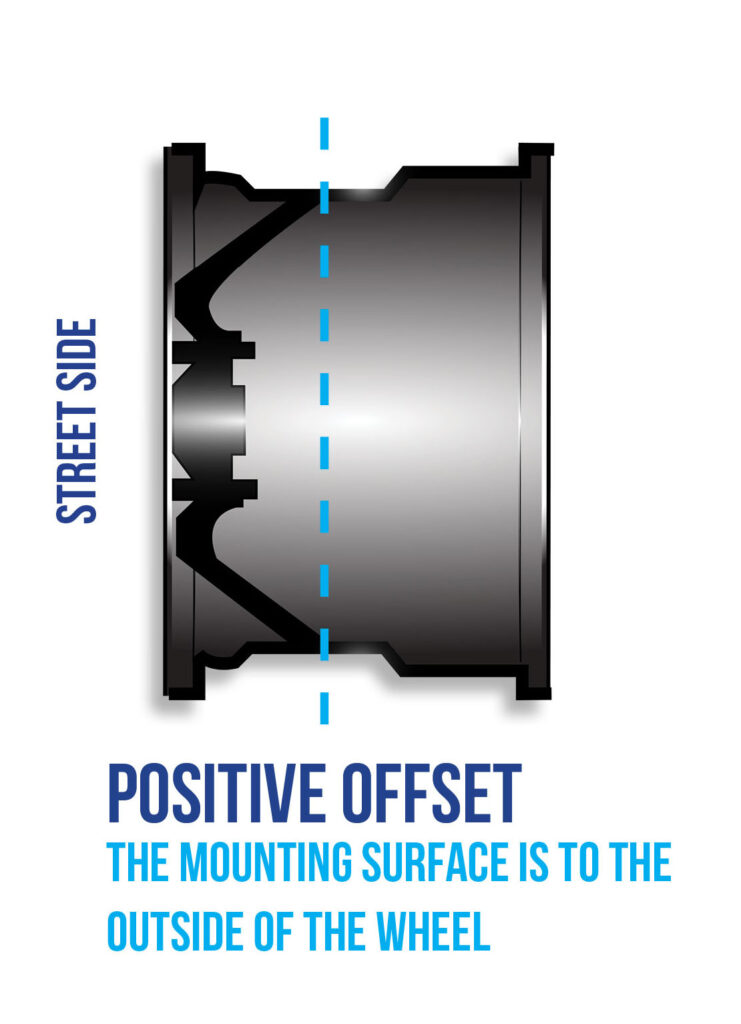
Pros
- Stability: Positive offset wheels provide better stability and handling characteristics. Positioning the wheel closer to the suspension components helps distribute the weight more evenly, enhancing the vehicle’s balance and control.
- Improved Clearance: Positive offset wheels often offer more clearance for suspension parts, brake calipers, and other components. This can be advantageous when fitting larger brake systems or if you plan to lower your vehicle, reducing the risk of interference.
- OEM Compatibility: Positive offset wheels are typically what the original equipment manufacturer (OEM) designs for the vehicle. Using wheels with a positive offset ensures compatibility with the factory suspension and maintains the intended geometry.
Cons
- Limited Tire Options: The space between the wheel and the fender is reduced with positive offset wheels. This little clearance may restrict the size of tires you can fit, limiting your options when selecting wider or more aggressive tire setups.
- Appearance: If you seek a more aggressive or sporty look for your vehicle, positive offset wheels may not offer the desired stance. They tend to sit further inside the wheel well, giving a more conservative appearance compared to wheels with a negative offset.
- Customization Limitations: When you consider aftermarket modifications or upgrades, positive offset wheels may limit your choices. Many aftermarket wheel designs cater to those seeking a wider, more aggressive fitment, typically requiring wheels with a negative offset.
Negative Offset
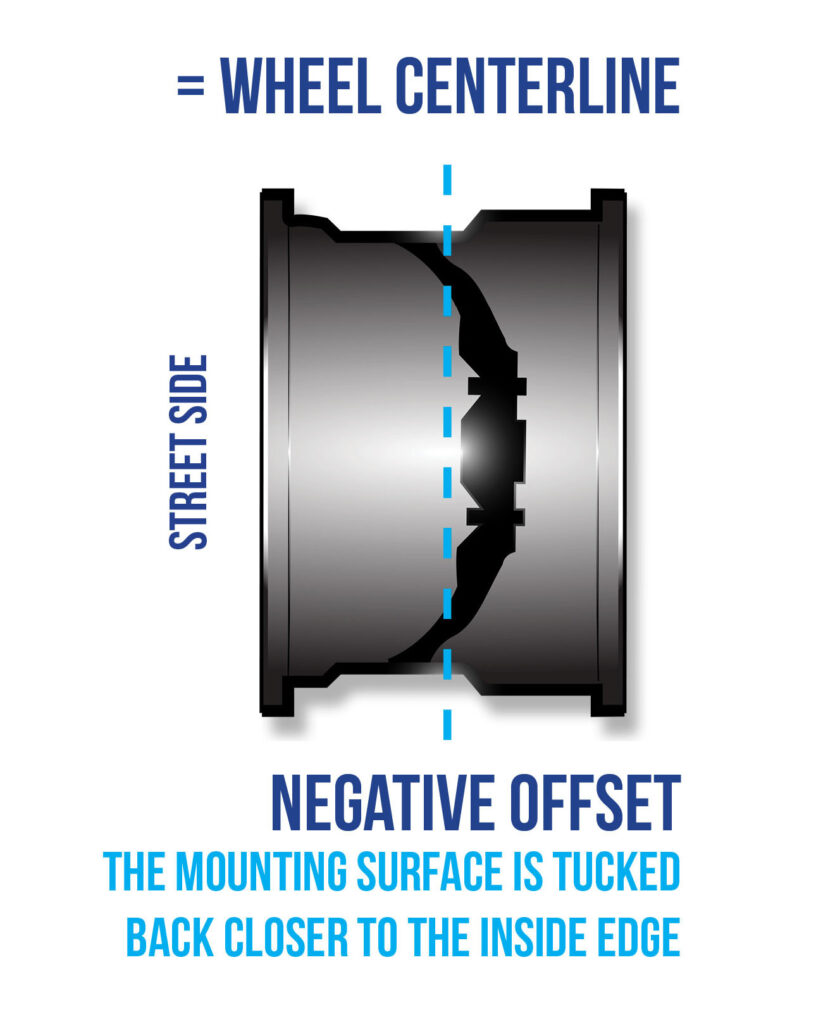
Pros
- Aggressive Stance: Negative offset wheels can provide a wider track and a more aggressive stance for your vehicle. They push the wheels further outward, bringing a visually appealing and assertive look that many car enthusiasts desire.
- Increased Tire Options: With negative offset wheels, there is more space between the wheel and the fender. This additional clearance allows for the fitment of wider tires, giving you more options on performance-oriented or off-road tires with enhanced grip and handling characteristics.
- Enhanced Cornering Stability: Negative offset wheels widen the track width, resulting in improved stability during cornering. The wider stance reduces body roll, increases traction, and enhances the overall handling capabilities of the car.
Cons
- Suspension and Component Interference: The wider positioning of negative offset wheels can lead to potential interference with suspension components, such as control arms or brake calipers.
- Increased Stress on Suspension: Negative offset wheels place additional stress on the suspension components. The increased leverage can lead to accelerated wear and tear on components like wheel bearings and ball joints.
- Legal and Safety Considerations: Depending on your jurisdiction, negative offset wheels may not comply with local regulations and could be considered illegal. Additionally, the wider track width may affect the vehicle’s handling dynamics, particularly in extreme driving conditions or emergency maneuvers.
How Can You Measure Offset?
Most aftermarket and OEM wheels have an offset mentioned on a sticker or laser-etched print. On the rim, they frequently leave it out. Follow my personal measuring method to get a precise result.
Step 1: Prepare the vehicle
Park your vehicle on a level surface and engage the parking brake. Turn the wheels straight to ensure accurate measurements.
Step 2: Locate the wheel centerline
Identify the center of the wheel by finding the hub or the center cap. This is the point where the wheel attaches to the vehicle’s hub.
Step 3: Measure the wheel width
Using a measuring tape or ruler, measure the wheel width from one bead seat to the other. The bead seat is where the tire sits on the wheel.
Step 4: Determine the backspace
As mentioned, backspace is the distance from the wheel’s rear mounting surface to the back edge of the wheel. Place the straight edge against the rear mounting surface and extend it to touch the back edge of the wheel. Use a marker or pencil to mark this point.
Step 5: Measure the overall width
Measure the overall width of the wheel from one edge to the other, including the backspace measurement.
Step 6: Calculate the offset
To calculate the offset, divide the overall width of the wheel by 2 and subtract the backspace measurement. The resulting number is the offset. If the number is positive, you have a positive offset. On the other hand, when it’s negative, you have a negative offset.
Step 7: Verify the measurement
Double-check your measurements and calculations to ensure accuracy. It’s always a good idea to measure multiple times to confirm consistency.
Step 8: Repeat for other wheels (if necessary)
If you have different wheels on the front and rear axles or multiple vehicles, repeat the process for each item that you want to measure.
Frequently Asked Questions
Is Positive Or Negative Offset Better?
There is no definitive answer as to whether the positive vs negative offset is better. The choice depends on various factors, such as the automobile, desired performance, and personal preferences. Positive offset offers stability, brake clearance, and suspension compatibility, while negative one can provide a wider track width and a more aggressive stance.
Is Negative Offset Bad For Off-Roading?
A negative offset is not inherently bad for off-roading. In fact, it can be beneficial in certain off-road situations. It widens the track width, providing increased stability and reducing the risk of rollovers. The wider stance also improves traction and handling on uneven terrain.
Is 5 Mm Offset A Big Difference?
A 5 mm offset can make a noticeable difference in the positioning of a wheel but may not be considered a big difference. It will result in the wheel being positioned slightly further in or out than one with a different offset. Its impact will vary depending on the specific vehicle, suspension setup, and desired outcome.
The Bottom Line
Rim offset is a fundamental aspect of wheel selection and customization. It determines the positioning of your wheels, impacting everything from handling and suspension geometry to tire clearance and overall aesthetics. By understanding wheel offset and considering its pros and cons, you can make informed decisions to achieve the perfect fitment for your vehicle.

